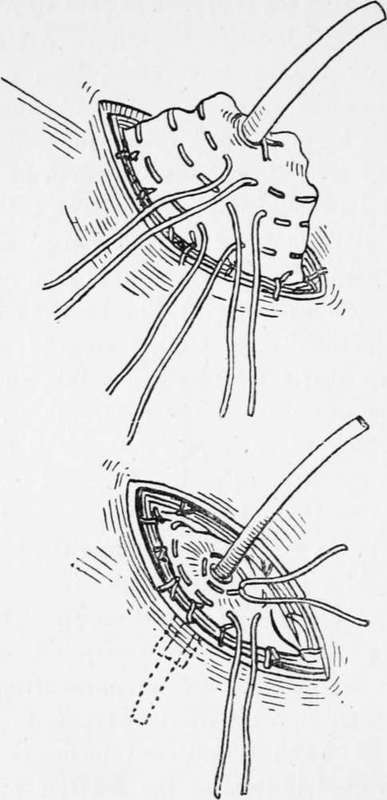E. J. Sennas method
Description
This section is from the book "Cancer Of The Stomach", by A. W. Mayo Robson, D.Sc, F.R.C.S.. Also available from Amazon: Cancer of the Stomach.
E. J. Sennas method
The stomach being exposed, an incision about 1 in. in length is made into its cavity as near the cardia as possible, and midway between the greater and lesser curvatures. A tube equal to a No. 12 or No. 14 catheter is now introduced into the stomach and there fixed by a suture, which includes the cut edge of the stomach and the side of the tube. In order to infold the tube in the stomach wall, a purse-string suture is passed round the tube at a distance of 1/2 in. from it. The tube is pushed inwards towards the stomach cavity while the suture is tied. A second purse-string suture, and then a third, are passed and tied in the same manner. The result is that the tube lies in a funnel-shaped inverted portion of the anterior wall of the stomach, and is there fixed by the sutures placed one above the other. The stomach is now fixed to the anterior abdominal wall by a suture above and a suture below the tube, and the abdominal incision is closed in the usual manner. The advantage of this method over Franck's, or its modification, lies in the fact that as the portion of the anterior stomach wall used for the purpose of effecting valvular action is pushed inwards instead of being dragged outwards, a larger cavity is left for the reception of food, and the area of the gastric mucosa brought into contact with the food is therefore more extensive. I can recommend this method as at once easy, safe, and efficient.

Fig. 24.-Gastrostomy. (Senn's method.)
Continue to:
Tags
stomach, operation, cancer, tumour, ulcer, gastric, gastrectomy
